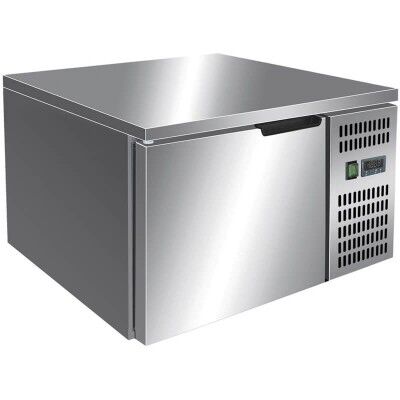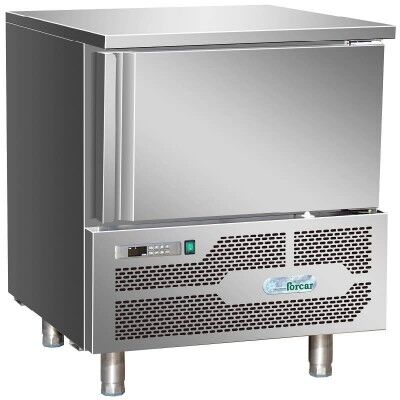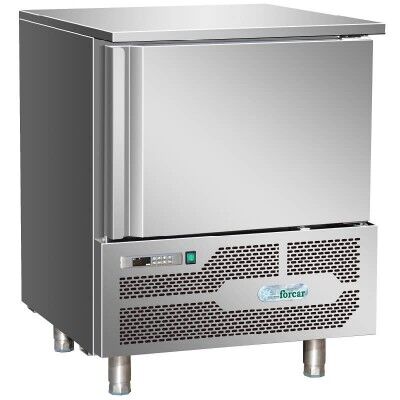Blast Chillers
Kitchen equipment plays a fundamental role in the outcome of your work, and among these, the blast chiller—also known as a temperature blast chiller—is designed to optimize time, space, and resources in your operations, whether you’re handling raw materials, semi-finished products, or finished dishes. Thanks to this technology, you can fully embrace the "cook & chill" concept, concentrating your production into just a few days a week while benefiting from extended food preservation times. So, why repeat the same preparations every day?
You’ll be able to prepare larger quantities of product in advance and serve them later based on actual needs, always with the assurance that everything will be as fresh and wholesome as if it were just cooked.
The Blast Chiller and How to Use It
How It Works:
What’s the purpose of a blast chiller? We could call it the "oven of cold"—an essential tool for the vast majority of catering businesses because it significantly reduces food processing costs by addressing the issue of rapid food spoilage.
The chilling process is designed to quickly lower the temperature of both fresh foods, like raw fish, and hot foods to low temperatures, with the goal of preserving the treated foods’ organoleptic properties unchanged.
Positive Chilling:
This process allows you to bring a food item from a temperature of 95°C down to 2-4°C extremely quickly compared to a traditional freezer, thus preventing bacterial contamination. One of the most common mistakes people make is freezing foods at room temperature, which preserves not only the food but also a dangerously high bacterial load.
Negative Chilling:
Also known as blast freezing, this process can lower the temperature of a food item to -20°C within 4 hours, compared to the 24 hours required by a standard freezer.
This method offers the major advantage of reducing food deterioration, allowing you to optimize kitchen workflows more effectively. Foods chilled immediately after cooking and stored at the correct temperature retain excellent organoleptic, hygienic, and nutritional qualities for several days—times that a regular refrigerator simply cannot achieve.
Another undeniable benefit of extending the shelf life of preparations is the ability to avoid repeating the same tasks every day. You can schedule them, for example, during quieter periods or alternate them based on the kitchen’s varying needs throughout the week. This optimizes the sourcing of raw materials and minimizes food waste as much as possible.
So, why repeat the same preparations every day?
That’s right—you can prepare larger quantities of product in advance and serve them later based on actual demand, always confident that everything will be fresh and wholesome, just like it was freshly made.
Blast chillers are tools that (in addition to being legally required in many cases) are gaining widespread popularity. For this reason, a wide range of products is available on the market to meet the most diverse needs.
In a market like that of professional catering equipment, which is subject to rapid changes driven by evolving trends and needs, it’s important to stay up-to-date with innovations while still preserving your traditions.






